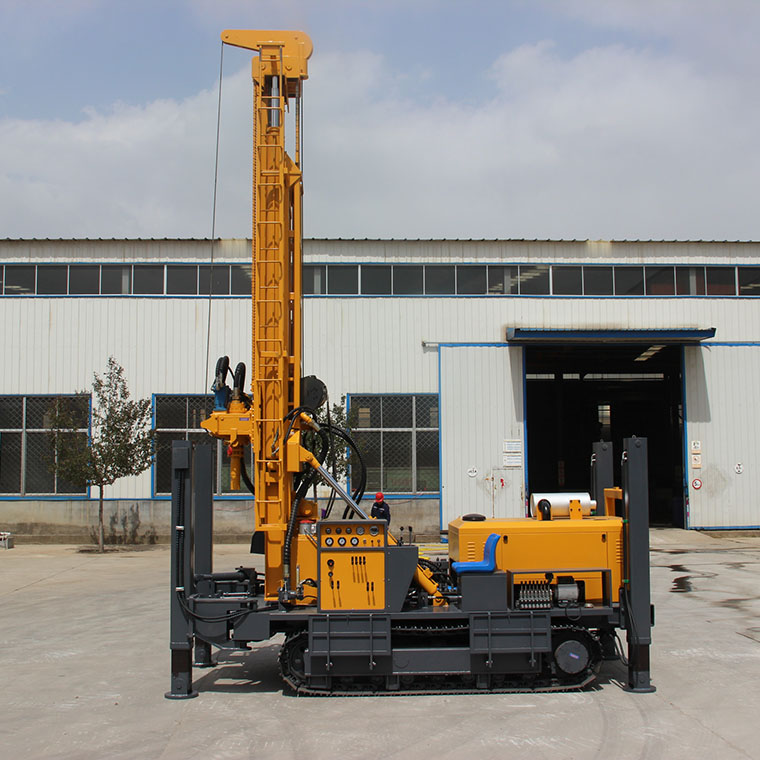The operating area of a water well drilling rig depends on a number of factors, including:
Model and size of the rig: Smaller rigs require a relatively small area, while larger rigs require more space.
Depth and diameter of the hole: The deeper the hole is drilled, the more space the rig will require to operate.
Geological conditions: Areas with complex terrain and poor geological conditions may require a larger working area.
Auxiliary equipment: In addition to the drilling rig itself, the footprint of auxiliary equipment such as mud pumps, generators, storage tanks, etc. should also be considered.Construction method: Different drilling methods (e.g. percussion drilling, rotary drilling, etc.) have different requirements for the working area.
Generally speaking, the minimum operating area required for a water well drilling rig is 2-3 times the maximum projected area when the rig is unfolded.
Factors affecting the operating area of a water well drilling rig
Site levelness: The flatter the ground, the smaller the area required.Load bearing capacity of the site: the weight of the rig and auxiliary equipment needs to be able to be supported by the ground.
Surrounding environment: Whether there are obstacles, buildings, etc. around will affect the operating space.
Construction process: Different construction processes have different requirements for the working space.
If you don't know how to choose the right water well drilling rig, click the link below to contact our professional team directly.
Comments
Post a Comment